
Chaos theory is an interdisciplinary area of scientific study and branch of mathematics focused on underlying patterns and deterministic laws of dynamical systems that are highly sensitive to initial conditions, and were once thought to have completely random states of disorder and irregularities. Chaos theory states that within the apparent randomness of chaotic complex systems, there are underlying patterns, interconnection, constant feedback loops, repetition, self-similarity, fractals, and self-organization. The butterfly effect, an underlying principle of chaos, describes how a small change in one state of a deterministic nonlinear system can result in large differences in a later state. A metaphor for this behavior is that a butterfly flapping its wings in Texas can cause a tornado in Brazil.
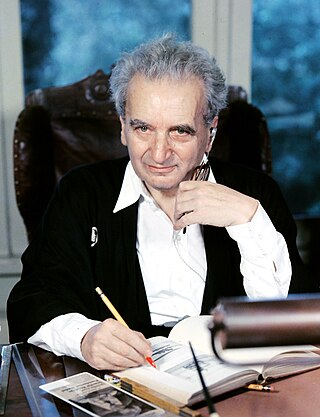
Theodore von Kármán, was a Hungarian-American mathematician, aerospace engineer, and physicist who worked in aeronautics and astronautics. He was responsible for crucial advances in aerodynamics characterizing supersonic and hypersonic airflow. The human-defined threshold of outer space is named the "Kármán line" in recognition of his work. Kármán is regarded as an outstanding aerodynamic theoretician of the 20th century.
Solid mechanics is the branch of continuum mechanics that studies the behavior of solid materials, especially their motion and deformation under the action of forces, temperature changes, phase changes, and other external or internal agents.
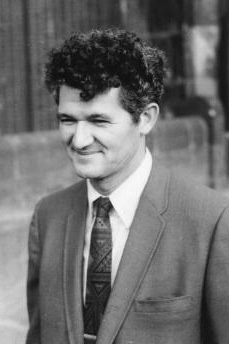
Peter David Lax is a Hungarian-born American mathematician and Abel Prize laureate working in the areas of pure and applied mathematics.

Dynamical systems theory is an area of mathematics used to describe the behavior of complex dynamical systems, usually by employing differential equations or difference equations. When differential equations are employed, the theory is called continuous dynamical systems. From a physical point of view, continuous dynamical systems is a generalization of classical mechanics, a generalization where the equations of motion are postulated directly and are not constrained to be Euler–Lagrange equations of a least action principle. When difference equations are employed, the theory is called discrete dynamical systems. When the time variable runs over a set that is discrete over some intervals and continuous over other intervals or is any arbitrary time-set such as a Cantor set, one gets dynamic equations on time scales. Some situations may also be modeled by mixed operators, such as differential-difference equations.
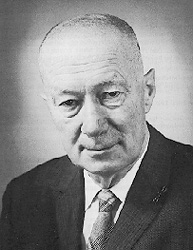
Johannes (Jan) Martinus Burgers was a Dutch physicist and the brother of the physicist Wilhelm G. Burgers. Burgers studied in Leiden under Paul Ehrenfest, where he obtained his PhD in 1918. He is known for the Burgers' equation, the Burgers vector in dislocation theory and the Burgers material in viscoelasticity.

John Henry Michell, FRS was an Australian mathematician and Professor of Mathematics at the University of Melbourne.
John Tinsley Oden was an American engineer. He was the Associate Vice President for Research, the Cockrell Family Regents' Chair in Engineering #2, the Peter O'Donnell, Jr. Centennial Chair in Computing Systems, a Professor of Aerospace Engineering and Engineering Mechanics, a Professor of Mathematics, and a Professor of Computer Science at The University of Texas at Austin. Oden has been listed as an ISI Highly Cited Author in Engineering by the ISI Web of Knowledge, Thomson Scientific Company.

Zdeněk Pavel Bažant is McCormick School Professor and Walter P. Murphy Professor of Civil Engineering and Materials Science in the Department of Civil and Environmental Engineering at Northwestern University's Robert R. McCormick School of Engineering and Applied Science.
Ali Hasan Nayfeh was a Palestinian-Jordanian mathematician, mechanical engineer and physicist. He is regarded as the most influential scholar and scientist in the area of applied nonlinear dynamics in mechanics and engineering. He was the inaugural winner of the Thomas K. Caughey Dynamics Award, and was awarded the Benjamin Franklin Medal in mechanical engineering. His pioneering work in nonlinear dynamics has been influential in the construction and maintenance of machines and structures that are common in daily life, such as ships, cranes, bridges, buildings, skyscrapers, jet engines, rocket engines, aircraft and spacecraft.
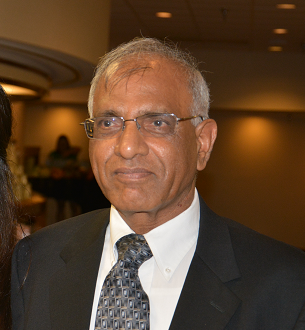
Junuthula N. Reddy is a Distinguished Professor, Regent's Professor, and inaugural holder of the Oscar S. Wyatt Endowed Chair in Mechanical Engineering at Texas A&M University, College Station, Texas, USA.[1] He is an authoritative figure in the broad area of mechanics and one of the researchers responsible for the development of the Finite Element Method (FEM). He has made significant seminal contributions in the areas of finite element method, plate theory, solid mechanics, variational methods, mechanics of composites, functionally graded materials, fracture mechanics, plasticity, biomechanics, classical and non-Newtonian fluid mechanics, and applied functional analysis. Reddy has over 620 journal papers and 20 books and has given numerous national and international talks. He served as a member of the International Advisory Committee at ICTACEM, in 2001 and keynote addressing in 2014.[2][3]

George M. Zaslavsky was a Soviet mathematical physicist and one of the founders of the physics of dynamical chaos.
Valentin Afraimovich was a Soviet, Russian and Mexican mathematician. He made contributions to dynamical systems theory, qualitative theory of ordinary differential equations, bifurcation theory, concept of attractor, strange attractors, space-time chaos, mathematical models of non-equilibrium media and biological systems, travelling waves in lattices, complexity of orbits and dimension-like characteristics in dynamical systems.

João Arménio Correia Martins was born on November 11, 1951, at the southern town of Olhão in Portugal. He attended high school at the Liceu Nacional de Faro which he completed in 1969. Afterwards João Martins moved to Lisbon where he was graduate student of Civil Engineering at Instituto Superior Técnico (IST) until 1976. He was a research assistant and assistant instructor at IST until 1981. Subsequently, he entered the graduate school in the College of Engineering, Department of Aerospace Engineering and Engineering Mechanics of The University of Texas at Austin, USA. There he obtained a MSc in 1983 with a thesis titled A Numerical Analysis of a Class of Problems in Elastodynamics with Friction Effects and a PhD in 1986 with a thesis titled Dynamic Frictional Contact Problems Involving Metallic Bodies, both supervised by Prof. John Tinsley Oden. He returned to Portugal in 1986 and became assistant professor at IST. In 1989 he became associate professor and in 1996 he earned the academic degree of “agregado” from Universidade Técnica de Lisboa. Later, in 2005, he became full professor in the Department of Civil Engineering and Architecture of IST.
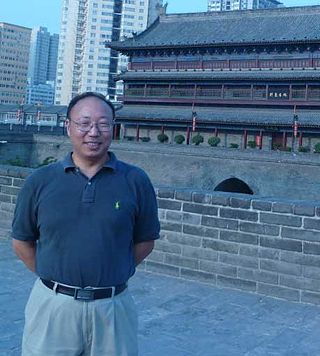
Albert C.J. Luo is a mechanical engineering researcher who has been serving as a distinguished research professor at Southern Illinois University Edwardsville in Illinois since 1998.
Patrick Huerre, born in 1947, is a French physicist in fluid mechanics. An engineer from the École centrale de Paris (1970), and a doctor of aeronautical sciences from Stanford University, he began his career at the University of Southern California in Los Angeles. In 1989, he was appointed Professor of Mechanics at the École polytechnique where he created, with Jean-Marc Chomaz, and then directed the Laboratoire d'hydrodynamique (LadHyX), a joint CNRS-École polytechnique research unit. He is currently Director of Research Emeritus at the Centre national de la recherche scientifique (CNRS). He is a member of the French Academy of Sciences.
Muthusamy Lakshmanan is an Indian theoretical physicist currently working as Professor of Eminence at the Department of Nonlinear Dynamics of Bharathidasan University. Presently he is the DST-SERB National Science Chair awarded by the Science and Engineering Research Board, Department of Science and Technology. He has held several research fellowships which included Raja Ramanna fellowship of the Department of Atomic Energy, Alexander von Humboldt fellowship, Japan Society for the Promotion of Science fellowship, Royal Society Nuffield Foundation fellowship, and NASI-Senior Scientist Platinum Jubilee Fellowship. In the year 2021, on August 15, he was conferred with the Dr. A. P. J Abdul Kalam Award by the Government of Tamil Nadu.
Walter Alexander Strauss is an American applied mathematician, specializing in partial differential equations and nonlinear waves. His research interests include partial differential equations, mathematical physics, stability theory, solitary waves, kinetic theory of plasmas, scattering theory, water waves, and dispersive waves.

Alain Goriely is a Belgian mathematician, currently holding the statutory professorship (chair) of mathematical modelling at the University of Oxford, Mathematical Institute. He is director of the Oxford Centre for Industrial Mathematics (OCIAM), of the International Brain and Mechanics Lab (IBMTL) and Professorial Fellow at St Catherine's College, Oxford. At the Mathematical Institute, he was the director of external relations and public engagement, from 2013 until 2022, initiating the Oxford Mathematics series of public lectures. In 2022, he was elected to the Royal Society.

Laszlo Adler is an American physicist and a Taine McDougal Professor Emeritus in the Department of Integrated Systems Engineering at the Ohio State University. He is known for his work in Ultrasonics, Acousto-optics, and Nondestructive Evaluation of Materials. He is a holocaust survivor and has been active in scientific research for over 60 years.












